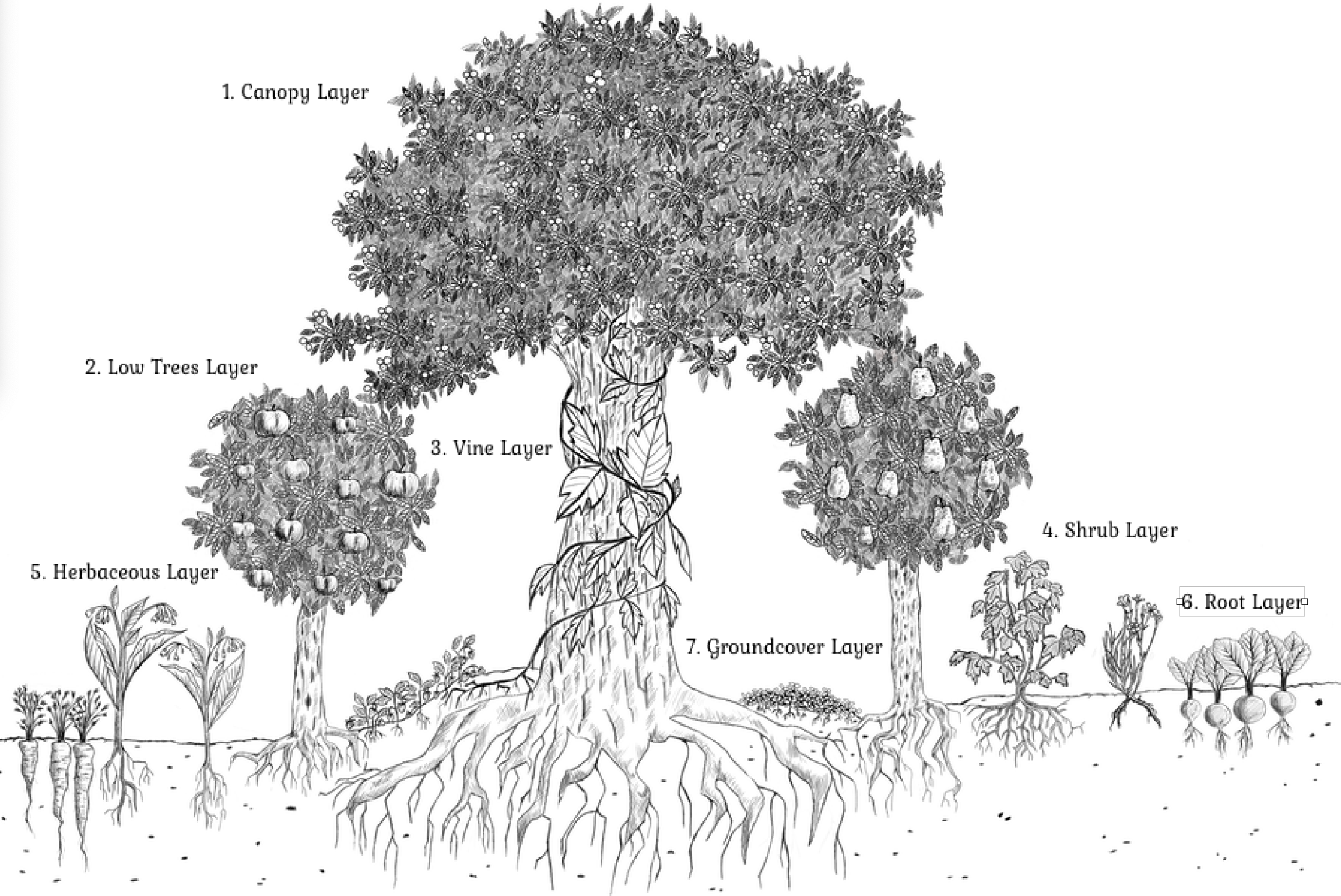When it comes to sustainable and regenerative agriculture, few practices capture the essence of harmonious coexistence with nature quite like Edible Forest Gardening. This innovative approach to cultivation allows us to mimic the natural beauty and resilience of forests while reaping a bountiful harvest of delicious, homegrown produce. In this blog post, we’ll embark on a journey into the world of Edible Forest Gardening, exploring what it is, how it works, and why it’s a game-changer for the environmentally conscious gardener.
What is Edible Forest Gardening?
At its core, Edible Forest Gardening is an agricultural system that draws inspiration from the structure and functions of natural ecosystems, particularly forests. It involves planting a diverse range of food-producing plants in a way that mimics the layers and relationships found in a forest ecosystem. Instead of traditional rows of crops, an edible forest garden consists of multiple layers:
- Canopy Layer: Tall fruit or nut trees create the uppermost layer, providing shade and a habitat for birds and insects.
- Understory Trees and Shrubs: These are smaller trees and shrubs that thrive in the dappled shade beneath the canopy.
- Herbaceous Layer: This includes perennial and annual plants like herbs, vegetables, and berries.
- Groundcover: Low-lying plants and groundcovers protect the soil, suppress weeds, and provide a habitat for beneficial insects.
- Root Crops: Edible plants like potatoes, carrots, and radishes grow underground.
- Climbers and Vines: These plants use the canopy and understory as support for growth, providing additional food sources and diversity.
The Benefits of Edible Forest Gardening
- Biodiversity: By mimicking natural ecosystems, edible forest gardens create a haven for biodiversity. This diversity helps with pest control, pollination, and soil health.
- Low Maintenance: Once established, these gardens require less maintenance than traditional gardens. The layers help suppress weeds and retain moisture.
- Sustainability: Edible forest gardens use less water and chemical inputs, making them more environmentally friendly.
- Resilience: The natural structure of these gardens makes them more resilient to extreme weather conditions and changing climate patterns.
- Abundance: You can harvest a variety of fruits, nuts, vegetables, and herbs throughout the year, promoting self-sufficiency.
Getting Started with Edible Forest Gardening
Creating an edible forest garden is a long-term endeavor, but it’s incredibly rewarding. Here are some steps to get started:
- Site Selection: Choose a location with good soil and adequate sunlight. Analyze your local climate and rainfall patterns.
- Plant Selection: Research native or locally adapted species that thrive in your area. Select a mix of fruit trees, shrubs, perennials, and annuals.
- Design: Plan your garden layout carefully, considering the different layers and the relationships between plants. Make sure to leave space for pathways and access.
- Planting: Start by planting the canopy layer, followed by understory trees and shrubs, and work your way down. Pay attention to spacing and companion planting.
- Maintenance: Regular mulching, pruning, and weeding are essential, especially in the early stages.
- Observation: Continuously observe your garden to learn from nature’s wisdom and make necessary adjustments.
In conclusion, Edible Forest Gardening offers a beautiful and sustainable way to cultivate food while fostering biodiversity and resilience in your backyard. By mimicking natural ecosystems, you can enjoy the abundance of nature’s design while reducing your ecological footprint. So, roll up your sleeves, grab your gardening tools, and embark on a journey of edible abundance in harmony with the natural world. Your taste buds and the environment will thank you!
If you want to learn more, check out my best-selling book “Think Like An Ecosystem” (Click Here).


0 Comments